

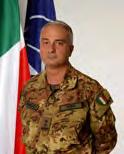
This book was compiled in order to explain the activities that make the Army Simulation and Validation Center a pole of excellence for the preparation of commanders, their staff and the units of the Italian Army.
In fact, all the commanders of the Italian contingents destined to serve abroad and their collaborators are trained in this Center prior to their deployment in theaters of operations of national interest.
Why is this the case? What activities are conducted at the Center?
In what ways are commanders, their staff and the units “prepared” to face scenarios so distant from those of our country, in terms of geography, culture and components? Is the simulated training course truly useful?
We have tried, page after page, to answer these and other questions, which may arise in the mind of the reader who has never addressed this issue, or even in military personnel who have had no experience with simulation exercises.
This was the motivation behind the present publication, which describes and explains the components of simulation training (live, virtual and constructive), underscoring each time the strong points of this system, focused mainly on the organization of exercises. These activities are conducted, in addition, in an historic location, where for almost sixty years, men and commanders have been trained: the “War College” in Civitavecchia. This publication intends to render homage to everyone, military and civilian, who has worked and studied at the Center, and in that which it is today, who have generously lent their time and effort to the realization of each chapter.
Finally, the book is dedicated to all those who continue to make their contribution, both in this country and abroad, in the challenges that the Italian Army faces each and every day.
The detailed collection of information and materials was conducted through continual contact with military personnel of various ranks and duties, who participated and still participates in the activities of Ce.Si.Va. in this area. We have decided to use direct and efficient wording, which will allow every reader to easily comprehend the world of Ce.Si.Va. This because the text aims to
by Maj. Gen. ITA (A) Maurizio BONI
serve as a useful tool for an audience that is not solely military and thus is not aware of all its activities, but will find in these pages specific and detailed information. Our point of departure recounts the brief but significant history of military life at the War College, located in Civitavecchia since 1947, after which we move on to underscore the transformation that occurred in 2006, with the concurrent name change to “Ce.Si.Va.”. We then examine the heart of the Center, the exercises that prepare the staff and the units. Starting with the “constructive” component, which tests the commands’ decision-making processes and trains commanders to exercise command and control functions over their units, after which we illustrate the “live” stage, in which Army units are equipped to operate in real environments, with individual arms, vehicles and weapons systems, thanks to the tactical training centers. The part dedicated to the simulation training includes a final component, the “virtual” stage, which can be used to train individual soldiers or teams in an artificial scenario, thanks to the Virtual Battlespace 3 (VBS 3) system. Like other cutting-edge organizations, Ce.Si.Va. is also active in research and development, field-testing some projects designed in collaboration with private industry. The final part of the book describes the efforts of Ce.Si. Va. personnel to ensure that the “laboratory trials” devised by technological means reproduce operations in the field as closely as possible. During this process, Ce.Si.Va. benefited by an address given by Major Trevis Delker, United States Army, assigned to the Center as liaison officer. In reference to the knowledge acquired during his posting, the American officer spoke of the importance of international collaboration in the study and application of training methods. The book closes with a description of local places of cultural and historical interest that can be visited inside the Center: the library, the museum and the Roman cisterns recently discovered on the premises, which make the place where we work even more special. The attention and dedication devoted to the articles, the graphics and the photos express the desire to display the very best and most engaging aspects of Ce.Si.Va., while emphasizing its formative mission, its training potential and possible areas of future development.
Good reading
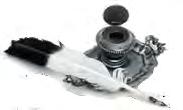
NRDC-ITA Commander
Lt. Gen. ITA (A)
Roberto PERRETTI
EDITORIAL BOARD
Editor in Chief: Col. ITA (A) Gianluigi ARCA
Editors : Lt. Col. ITA (A) Vincenzo
SCHETTINI, Maj. GBR (A) Christopher DAVIES, Maj. ITA (A) (RES) Isabella RAUTI
Assistant Editor and Graphic Designer: Cpl. ITA (A) Chiara MONTI
Assistant in Imagery and Post Production: WO1 ITA (A) Francesco CIVITELLI
Photographers: Cpl. ITA (A) Raffaele SANSEVERINO, Cpl. ITA (A) Chiara MONTI
Web: WO ITA (A) Italo BOATO
The “Special Insert” is aperiodic and attached to the Everywhere Rapidly magazine, wich is the authorized official pubblication of NATO Rapid Deployable Corps, Italy. All editorial content of the Everywhere Rapidly is prepared , edited and approved by the NRDC -ITA Commander, at “ Ugo Mara” barracks, via per Busto Arsizio, 20 - 21058 Solbiate Olona , Varese, Italy. The Everywhere Rapidly is published by the Public Affairs Office. Contents of the Everywhere Rapidly are not necessarily the official views of, or endorsed by the North Atlantic Treaty Organization and the Nations thereby represented.
This issue of the ” Special Insert” has been drafted in collaboration with Ce. Si.Va..
All intellectual property rights, including copyright, in the content displayed on the Everywhere Rapidly belong to their respective owners. All material and information, including comments, are governed by the doctrine of fair use. The Publication and the content may only be used for lawful purposes. For this purpose alone one may print out, reproduce or photocopy as needed.
The editor reserves the right to edit all submissions for style, brevity and clarity.
In Collaboration whit: Simultanea
Printed by Grafica Metelliana
CONTENTS
HISTORICAL BACKGROUND
FROM THE SCHOOL OF WAR TO CE.SI.VA.
CE.SI.VA. AND ITS MISSION
UPDATING OF PERSONNEL AND UNITS
Constructive Virtual Live
THE TACTICAL TRAINING CENTERS (CAT: Centri di Addestramento Tattico)
RESEARCH & DEVELOPMENT
INTERNATIONAL COOPERATION
SUPERVISION OF THE MAIN TRAINING EVENTS
Ce.Si.Va.: A LOCATION OF HISTORICAL AND CULTURAL INTEREST
The Library, the Roman cisterns, the Museum
3 2
攀
6 7 8 10 12 13 14 15 18 20 21 22
Italian Army Simulation & Validation Centre Commander’s note

Civitavecchia, (Rome) “Giorgi“ base 1957. Cadre of Commanders attending the Italian War Colllege “Scuola di Guerra”
Historical Background
Today, the Army Simulation and Validation Center in Civitavecchia (Ce.Si.Va.) is the primary point of reference for the application of training simulations utilized to update command post personnel and the staff and units destined to serve outside the country’s borders. It is one of the most versatile and effective instruments at the disposal of the Italian Army to prepare its men and women to face the challenges of today’s complex theaters of operations. It was founded January 1, 2006, with its headquarters in the premises of the War College “Scuola di Guerra” in Civitavecchia, the Officers’ Training Institute for the Army and the Carabinieri, destined to fill staff positions with increasingly important responsibilities within the ranks of their respective forces. But the history of the “Scuola di Guerra”, goes back much farther, to the first days of the nation, in Turin, in 1867. After a series of events caused mostly by the two World Wars, in
1947 the Institute was re-formed in Civitavecchia, in the barracks named after Cap. Luigi Giorgi, decorated with two Medals of Honor for Military Valor in the Second World War.
On October 15, 1949, the Institute was officially renamed “The School of War” and inaugurated on March 8, 1950, by the then President of the Republic, Luigi Einaudi.
From that time, the Army’s School of War has gone through several organizational changes and the training process has also developed in different areas. The most recent example is the holding of courses for the General Staff at the Army School of Applied Studies and Military Institute in Turin and the merging of the Advanced Course for the General Staff with the Joint General Staff Advanced Institute (ISSMI) at the Center of Advanced Studies on Defense (CASD), in Rome.
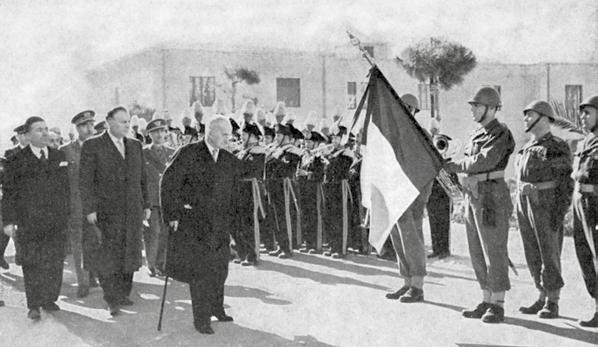
From the School of War to Ce.Si.Va.
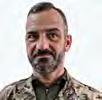
TCivitavecchia (Rome), 8 March 1950.
Inauguration, by the first President of the Italian Republic, Luigi Einaudi
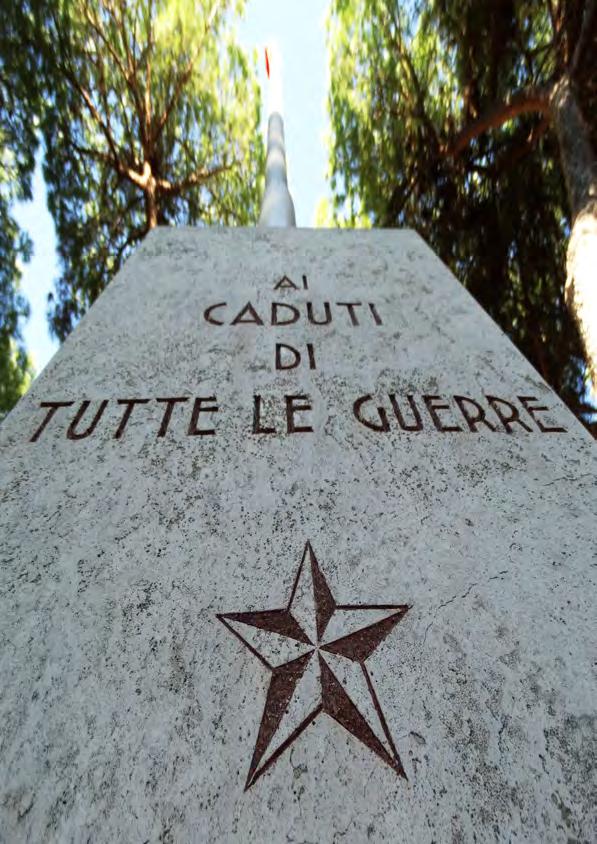
he first of January, 2006, shall be remembered as an important day in the 59-year history of the “School of War”: having completed a long and difficult process of transformation, the military academy, which had been located in Civitavecchia since 1947, changed its name to “Army Simulation and Validation Center”. The process had begun some years before, at the end of the ‘90s, when a team of specialists began to work on the new simulation systems, first at the Infantry Academy in Cesano (Rome) and then at the School of War itself, as it was then known. They were developing new and more effective training methods, designed to prepare the units of the Armed Forces as thoroughly as possible. The plan was to tailor the training to suit the new theaters of operation while spending less and diminishing environmental impact. The concerted professional and economic effort completely repurposed the structure, composition and above all the institutional objectives with which Central Command tasked the Center, which until a few years before had been the Army’s most prestigious training school, attended by the commanders of the future.
The effort expended to shift from an emphasis on teaching to a more purely operative focus was considerable and anything but simple. The key factor was the ability of the school’s personnel to review and adapt their contributions and work methods to the new system and the new objectives assigned to the Center, thus providing a fine example of their professionalism. There remained the challenge of communicating, both within the Armed Forces community and without, to the general public, the new role that would be played by an historic institution, particularly at the local level, given the considerable impact of the School of War on
economic and social spheres in Civitavecchia.
In order to underscore that the transformation had been effected with an eye to maintaining continuity, but without neglecting the need for innovation, the master message adopted was to emphasize that “where men and their commanders were once trained, we now train the commands themselves”. It was important to highlight the potential growth of the Center, whose excellence would bring the body to national and international prominence, as had been the case for the School of War, equaling its efficiency, form, prestige and high visibility.
After more than a decade, Ce.Si.Va. has become an established point of reference in the field of training simulations, and even greater challenges await it in the years to come. In fact, the Center has been assigned to develop and test the Army’s future net-centric networks, making our Army more modern, flexible and capable of responding effectively to future scenarios.

THE STORY
7 6
Lt.Col. ITA (A) Gianluca ROMANO
Photo credit: Ce.Si.Va.
“Giorgi” Base War Memorial
Ce.Si.Va. and its mission
Over the years, the land forces have taken advantage of their unique capacities and organizational flexibility, factors that allow only the Army to play an operational role in the entire “range of conflicts”, with units that can obtain tangible results in complex theaters of operation. Activities aimed at updating contingents played a key role in the acquisition of these capacities. The increasing reliance placed on training simulations can certainly be considered one of the most successful fundamental elements in guaranteeing the achievement of the Army’s operational objectives.
The Center’s activities are concentrated above all on organizing exercises assessing the attainment of the operational capabilities considered “fundamental” to the
accomplishment of the mission, utilizing technologically advanced digital command and control simulation systems.
Ce.Si.Va. is able to synergistically exploit the three components of training simulations (LIVE, VIRTUAL and CONSTRUCTIVE), realistically recreating the scenarios and situations that the staff and the units will be confronting after their deployment, and thus verifying the decision-making processes of the command and the units, from the simplest to the most complex. In the past few years, all three components have grown noticeably in terms of technological development and consequent additional training.
The combination of Virtual, Live and Constructive (VLC) simulation environments is utilized for training
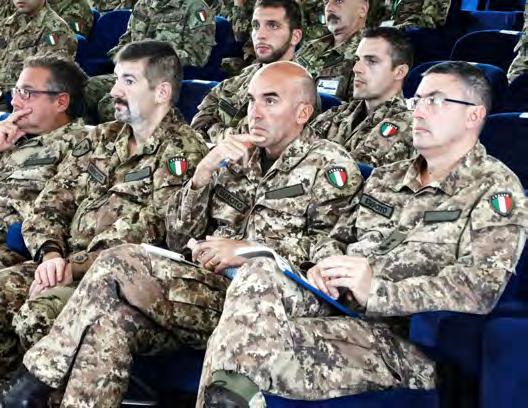
individual soldiers and entire units. The training environment consists of a number of interconnected simulators/systems, specific to the type of training to be accomplished, which use homogeneous game scenarios and can be moved to different locations.
Ce.Si.Va. is divided into a CONSTRUCTIVE center, based in Civitavecchia, and five Tactical Training facilities, in Monteromano (VT), Cesano (RM), Capo Teulada (CA), Lecce and Brunico (BZ), and is staffed by both military and civilian personnel. Specifically, at present the Center plans and conducts exercises in the following scenarios: WAR, CRO (Crisis Response Operations) and COIN (Counter-insurgency) for Command Posts (the so-called CPX exercises, Command Post eXercise) at the regimental, brigade and
division level, as well as the “LIVE” exercises held at the five Ce.Si.Va. Tactical Training Centers. Ce.Si.Va. has also been tasked with testing integrated systems for land-based training, simulating command and control, for the purpose of updating the sector, as well as experimenting with the systems for the digitalization of the battlefield in the context of the broader Defense program named “Forza NEC” (Network Enabled Capability), in close collaboration with the national and international industry in the sector.
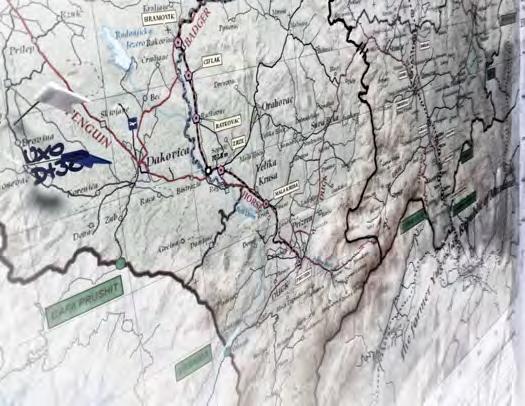
CE.SI.VA. AND ITS MISSION
9 8
Civitavecchia (Rome). Staff officers receive a brieting at Ce.Si.Va. during a CPX
Updating of Personnel and Units
The activities carried out at the Center always focus on the individual, the primary focus and object of the training, who must be able to overcome the obstacles posed by the scenarios, the procedures, the means at his disposal and the other actors, national and international, but above all, overcome his personal barriers.
The Center attempts to reproduce, as faithfully as possible, the environment within which men and women will operate in theaters of conflict; in doing this, it recreates the emotional stress that often puts subjects under pressure, which men, women and commanders must learn to overcome by drawing on their professional, human and personal qualities.
Therefore, the Center’s training capacities are not ex-
TRAINING PRACTICE RATING


clusively limited to providing training exercises for users to master, but also to offer a valuable tool, versatile and dynamic, to be used by commanders who come to train with their units, and thus raising the exercises from the level of mere assessment activities to instances of training in which the EXCON (Exercise Control), control observers and the HICON (Higher Control) can, if necessary, act as mentors or SME (Subject Matter Expert), for specific topics requiring in-depth treatment and thus contribute concretely to the development of the unit.
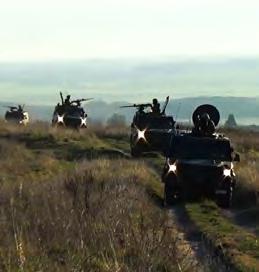
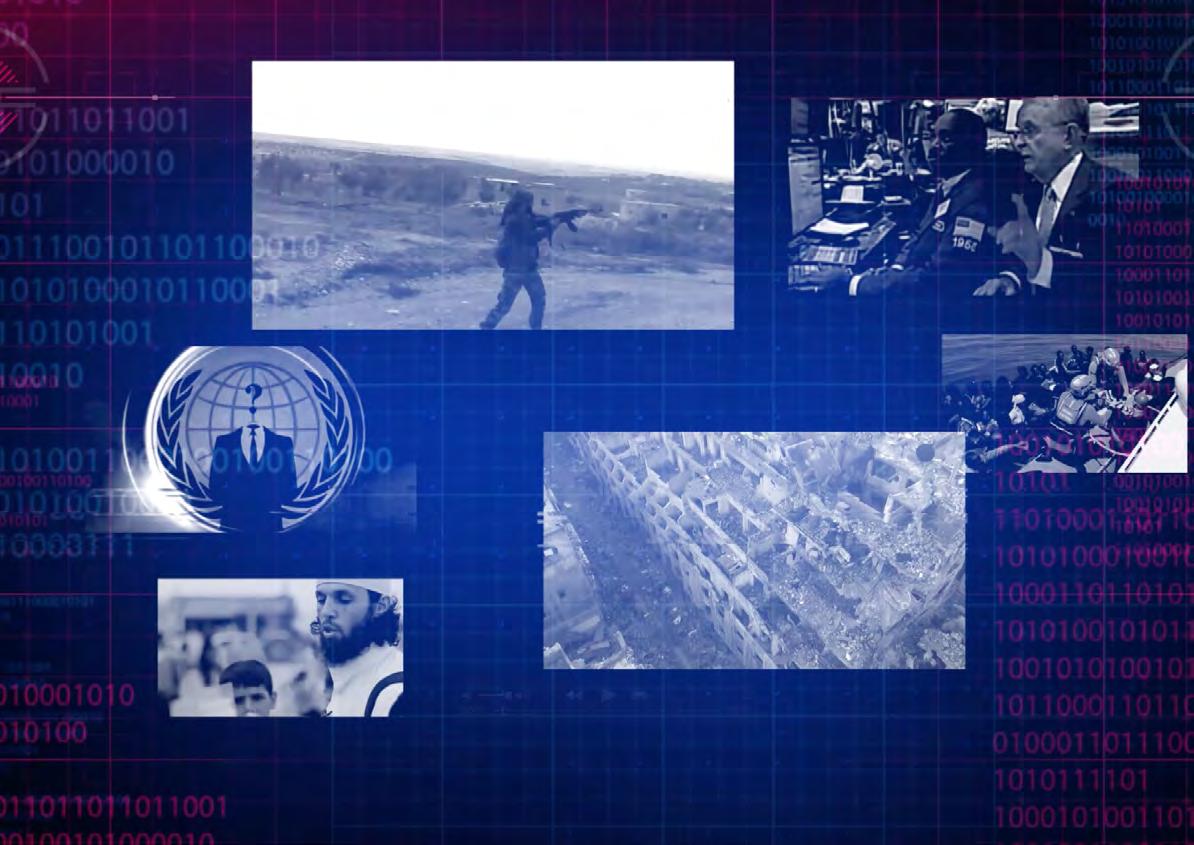

Live Training in Monteromano ( Italy ) 11 10
Photo credit: Ce.Si.Va.
Photo credit: Ce.Si.Va.
Constructive
The constructive component, which is based on the simulated action of men and vehicles, but under the command of flesh and blood people, is utilized in the Civitavecchia headquarters. It provides exercises for regimental, brigade and division commanders and their respective staff, who must develop command and control functions for the units under them in a vast range of training scenarios, developed based on the most recent operational documentation available. The constant contact with theaters of operation and the corresponding NATO centers and allies and the analysis of the lessons learned during the course of past missions provide valuable assistance in the creation of ever more realistic scenarios.
The constructive phase of training includes a preparatory phase, during which the application context is studied, the training objectives to reach are analyzed, the functional areas to be assessed are defined and the situation to be submitted to the staff for review are identified in detail. Participants are then taught how to use the main digital tools and the simulators, while sector and area experts go into greater depth on some aspects of the operation, illustrating possible outcomes for decision-making processes.
The practical stage instead consists of reproducing operational conditions and critical situations (to simulate decision-making stress) that must be handled by commanders and their staff.
The performance of the participants is analyzed by a dedicated team of assessors. At the end of the exercise,
these are illustrated and discussed in dedicated sessions, which have proven to be one of the most productive and valuable steps of the entire training process.
The simulation system most utilized in the constructive environment is the Joint Conflict and Tactical Simulation (JCATS), which can control over one hundred thousand units and utilizes more than 150 stations with a variety of dynamic simulated environments. It can handle up to 12 groups, including hostile, neutral and allied.
As stated above, the key to the constructive component of the simulation is the realistic design of the scenarios, and their continual updating with real theaters of operation. The military personnel do not always come to Ce.Si.Va. After a tour of duty spent together, and often the commander verifies the degree of cohesion and synergy of his staff for the first time during the CPX CAX (Computer Assisted Exercise).
The staff and the commander are required to act as they would in a theater of operations, with the same limitations (for example, communicating the most appropriate orders in the short time available for analyzing the situation and coming up with a possible solution). In this situation of ongoing stress, the salient characteristics of a cohesive unit and the leader that guides them emerge.
During the training process at Ce.Si.Va., various aspects are tested: from physical and mental strength under stress to the spirit of sacrifice and the commander’s self-control (as well as that of the staff) and ability to provide inspirational leadership.
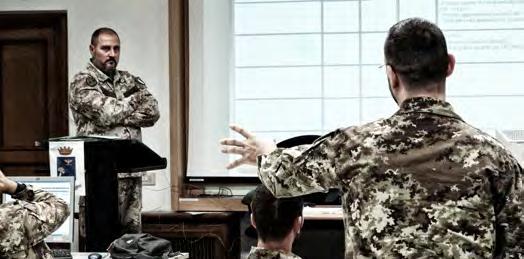
The “virtual” component of the simulation permits the training of individual soldiers or teams, in a “synthetic” or virtual reality environment that faithfully reproduces the theater of operations in question. Ce.Si.Va. utilizes the “virtual” component in LIVE and CONSTRUCTIVE exercises to give the results of the decision-making process greater visibility. The simulation platform for this component of the Italian Army is called Virtual Battlespace 3 (VBS 3). It allows the execution of tactical training activities in a scenario that can be adapted each time to the desired training objectives, offering virtual exercises in terrestrial, marine and aerial environments that are profoundly engaging. The VBS virtual environment contains a vast archive of content for the assembly of models to populate the scenarios and can develop area maps to suit training needs. It allows for the personalization of training for an individual/team through models (avatars) whose programs include realistic difficulty algorithms. The scenarios can be altered in real time, in order to adapt them more closely to the action as it develops. The VBS 3 system is currently utilized by the Army both because of the above reasons and because it utilizes commercial hardware supports that can be easily obtained on the free market.
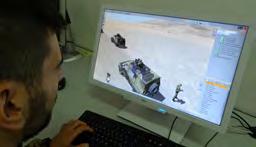

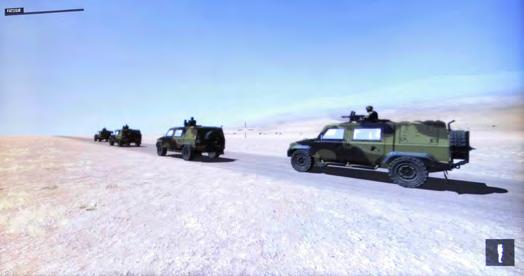
Virtual
13 12
Screenshot of the Virtual Battlespace 3 (VBS 3)
Photo credit: Ce.Si.Va.
A moment of training at Ce.Si.va.

The Tactical Training Centers (CAT: Centri di Addestramento Tattico)
The “live” component allows Army units in training to operate in realistic environments,, utilizing individual weapons, vehicles and weapon systems actually available and simulating their effects. It is distributed among the five Tactical Training Centers. The exercises carried out here involve two opposing teams, and thus involve the use of highly specialized units, trained to cover the role of the opposition forces and capable of reproducing, in addition to conventional combat, the other types of threats most recognized at the international level, such as terrorism, organized crime and the actions of irregulars who, when combined with regular troops, can present a “hybrid” threat. The kinetic effects and the effects of fire are reproduced by the simulation system without resorting to the use of real ammunition. In fact, troops and vehicles are equipped with “duel simulators” and various sensors that define the effects of the actions undertaken by the units in combat. In practice, the “live” component of the simulation allows units to try forms of deployment and face difficult tactical challenges that cannot be carried out using loaded weapons due to the limitations imposed by the training locations, security measures and the lack of opposing forces.
The “live” stage is also preceded by a preparatory step, which includes a study of the scenario and the training objectives, the placement of sensors throughout the training area and the preparation of the mobile devices for the control and assessment of the exercise results. At this time, a review is conducted to ensure that the various components are functioning properly, and the participants are instructed as to the simulation systems’ operation and the tactical procedures for using them. The active part of the exercise envisions ground missions for a duration of 36/48 hours, constantly followed by a team of Observers/Controllers and analysts who monitor and assess the decision-making processes of Commanders of every level and the troops’ behavior on the ground.
The exercise concludes with an analysis and discussion of the results, facilitated by the simulation systems’ ca-
pacity to select, recover and graphically visualize combat actions, factions or units in various combinations or simultaneously, and thus providing a very broad range of elements for assessment and parameters recorded during the training exercise. All the data are then handed over to the unit trained, which can thus re-analyze its conduct, at the base where they are stationed, and make the necessary corrections to the mistakes identified.
The use of training activities that involve the trainees in increasingly realistic situations pertinent to those that might occur during real operations has the effect of engaging the trainees to the utmost, faithfully re-creating both the technical-tactical procedures and the emotional effects experienced on the field of battle.
This means that, although we are in a “simulated” situation, the answers we get are “real”. Consequently, the exercise provides an opportunity to focalize on all the aspects that would emerge in a real situation and that can, thanks to the system, be reviewed and evaluated during the “game”, furnishing a detailed picture of the military, human and moral resources that trainees can call upon.
Once again, the key figure is the Commander, group leader thanks to recognized physical, mental and professional qualities. A commander with these characteristics acts as a multiplier for the group’s capabilities: the contrary is devastating.
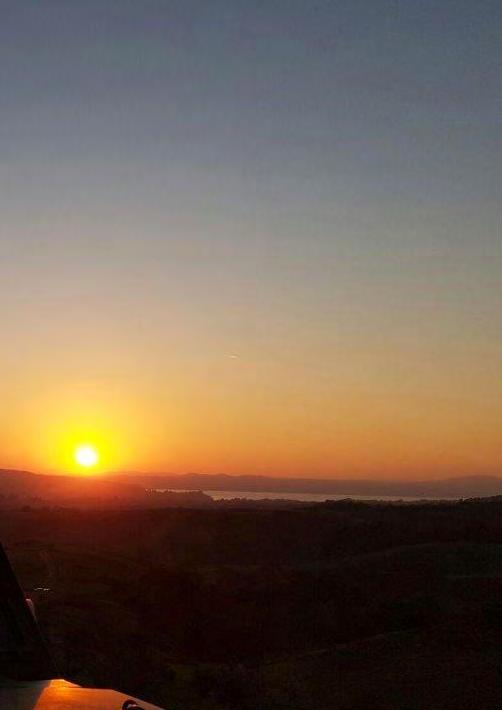
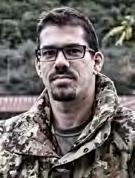
The complexity of today’s scenarios demands that combatant training evolve constantly, developing increasingly challenging and articulated activities. The most complete training is carried out Force-on-Force, because it provides trainees with real opponents, who think and want to win. Simulation permits an unparalleled degree of realism by integrating technical-tactical procedures with the effects of gunfire, which would not be possible with real weapons and not as effective in the traditional training exercises with opposing forces. Training using combat simulators, used at the CATs, engages the Training Audience (BLUEFOR) in exercises characterized by a dynamic space-time continuum, in an environment that allows almost unlimited maneuvers, in situations adapted to the training objectives pursued. The opposition forces (OPFOR) are asked to adopt “creative” tactics similar to those posing possible threats in current theaters of operations and possible future scenarios. The CATs are subdivided according to the characteristics of the unit undergoing training: level 1 indicates a lesser degree of tactical/complexity and level 2 those structured for a platoon.
Level 1 CATs are divided into three sections: Support, Planning, Scenario Preparation and Execution (PPSE) and Observer/Coach-Trainer (O/C-T). In level 2, the O/C-T and PPSE sections are combined. The support section, in addition to guaranteeing the supply of efficient materials and systems, also manages the stage of in processing and uniform assembly through the application of sensors linked by wi-fi. The planning/scenario
preparation/execution section is tasked with creating, in collaboration with the unit being trained, the context in which the exercise will be carried out, as well as the events and injections that will serve to develop the essential training objectives, based on the METL (Mission Essential Task List) received from the unit. The O/C-T, section is the CAT operative unit: each O/C-T establishes a relationship of trust with the trainees and during the exercise loyally observes and records their actions, in order to propose the topics for analysis that constitute the true final product of the training activities.
Thanks to the data collected by the O/C-T, supported by the detailed measurements by the instruments and the advanced multimedia products provided by the simulation system operated by EXCON, the analysis of the training activities is presented for an After Action Review (AAR) to BLUEFOR, so that, through a guided and reasoned review, it can draw its own conclusions regarding the outcomes. These considerations provide an indication of the training processes to be followed in the future.
In this context, the enemy is represented by the “Opposing Forces” (OPFOR), with which each CAT establishes a close collaboration in order to develop an advanced concept of training activities
Live
OF STAFF AND UNITS
THE PREPARATION
15 14
Capt. ITA (A) Federico VAIA
TRAINING , TESTING OF NET-CENTRIC CAPABILITIES AND THE DIRECTION OF MAJOR TRAINING EVENTS LED BY THE ARMY
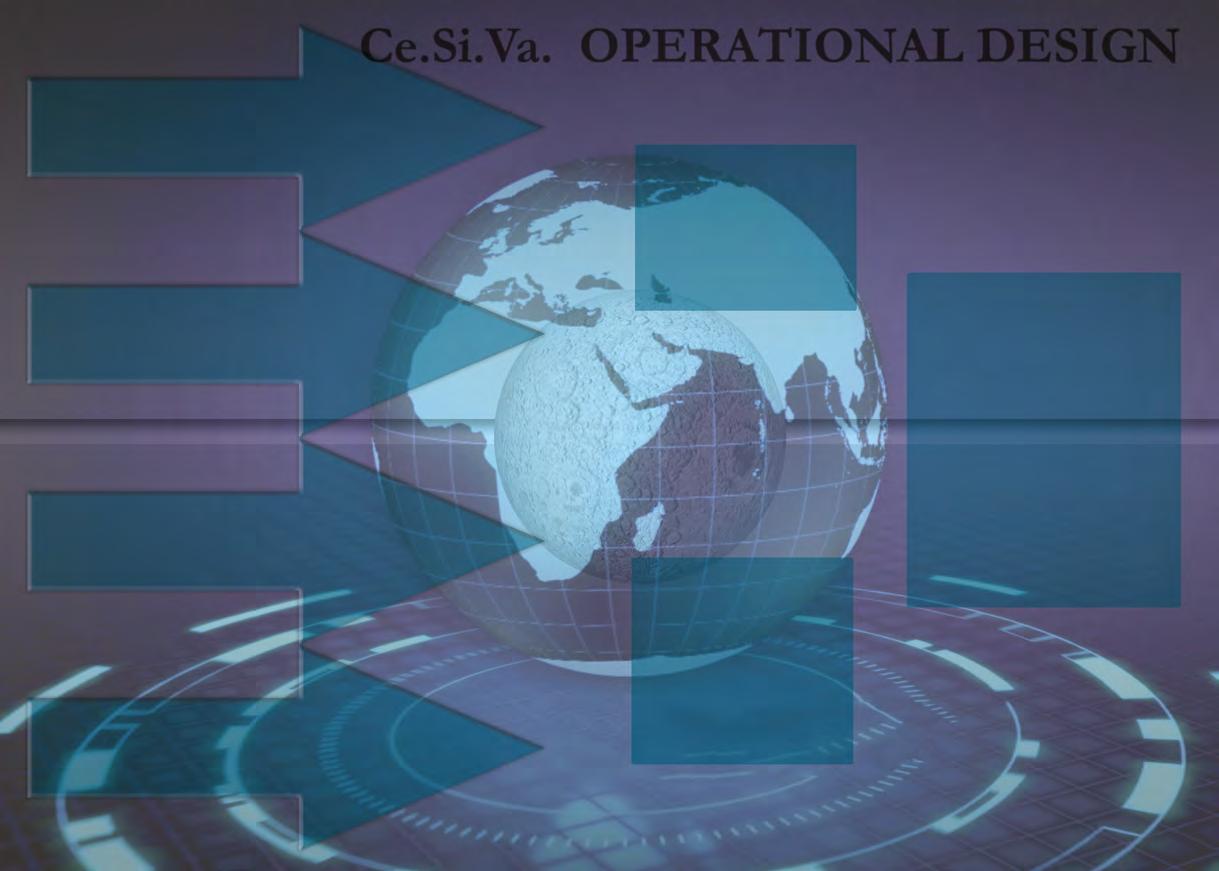


Research & development

Real time information about what is happening on the ground. Making decisions and giving orders based on the greatest possible quantity of data. Reducing costs and risks associated with systems that do not meet the needs of the Armed Forces. It’s not science fiction, but the everyday reality that the staff of Ce.Si.Va. puts at the disposal of troops on the ground, providing a framework of development and
experimentation whose ultimate goal is the realization of command and control systems (and more) tailored to their needs.
The technological core of Ce.Si.Va. is represented by the research and development department, whose fundamental task is to test, initially in the laboratory (Integration Test Bed) and then in the field, the products/ systems/architectures derived through projects developed in synergy with private industry.
Specialized military personnel (IT engineers, simulation and modeling experts and software developers) verify conformity in the passage from laboratory testing to the operational context, allowing the Defense Department to perform some “fine tuning” before the prototypes go into production, thus saving considerable time and public funding.
The “Forza NEC” (Network Enabled Capability) program is one of the driving forces behind the transformation of the Army. The aim is to create a “digital” force (traditionally structured but equipped with ad-
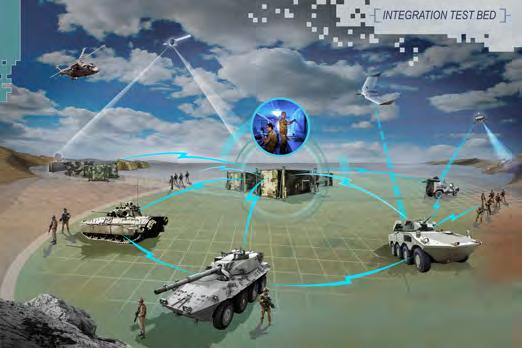
DEVELOPMENT AND EXPERIMENTATION
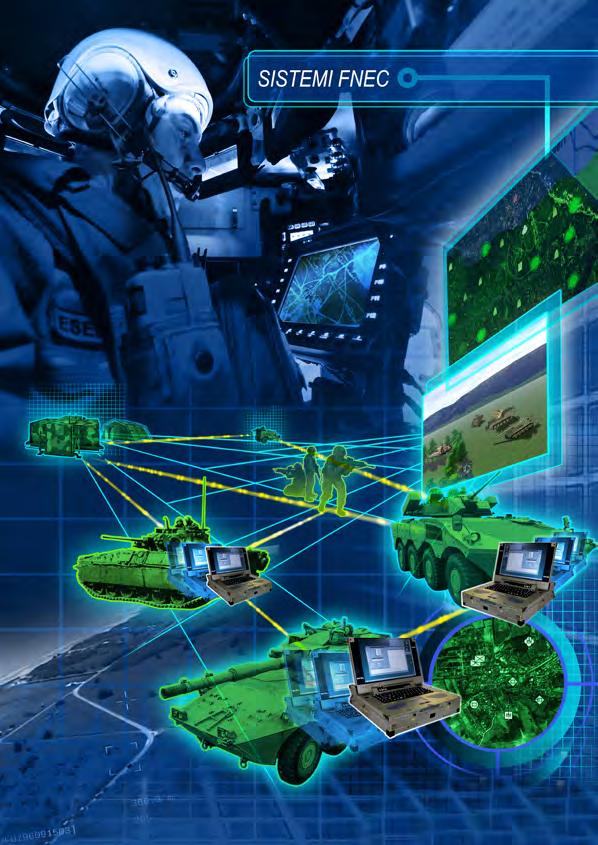
vanced technology), making soldiers genuine “human terminals” able to report in real time to the command about the tactical situation at various levels, even in high risk contexts.
Thanks to this net-centric capacity, which employs the very latest technological innovations in the command and control area, communications and Information Technology, the capabilities and efficacy of the troops on the ground are improved, through real-time knowledge of the tactical situation.
“NEC” capability permits the synergistic exploitation of information coming from the theater of operations, which, processed in real time, allow commanders to make decisions more rapidly and more effectively. All the actors operating in the area of maneuvers are in a network and can participate in the decisions made and orders given at the various levels of command. The project will allow any digital platform to function as the nodal point of the command and control network.
Thanks to the test sessions conducted in the ITB laboratories, coordinated by Ce.Si.Va (as an Armed Forces Master Facility), and the operational integration organized over the year in the training shooting ranges, suggestions and remarks can be received from the “end users” themselves (the unit commanders, starting with the lower ranks) regarding reviews of the requisites, before putting the various systems into production.
Another objective is to acquire useful indications for establishing the proper level of distribution of these new capabilities, which also upend established and timehonored schemes and procedures.
Furthermore, the use of protocols and encrypting will make it possible to transfer this information in a secure and reliable manner.
In this context, Ce.Si.Va. performs the function of SIF (System Integration Facility), analyzing, verifying and validating the integration of the Army’s digital platforms and the operational capabilities of the Forza NEC project.
In practice, it is a question of finding out how the individual systems tested in the lab will behave in an operational context in the field, in a net-centric environment with a degree of complexity that increases depending on the type and number of configurations used. Similarly to what has become standard practice in the
civil and industrial world and as has been understood for some time by other members of the Alliance (the US first and foremost, which considers M&S one of the crucial technologies in which to invest), recently, and in particular thanks to the start of the “Forza NEC” program, our Armed Forces have shown that with regard to the use of simulation tools, there has been a “cultural shift” in perspective.
1ST Lt. ITA (A) Rosaria TALARICO
19 18
International cooperation
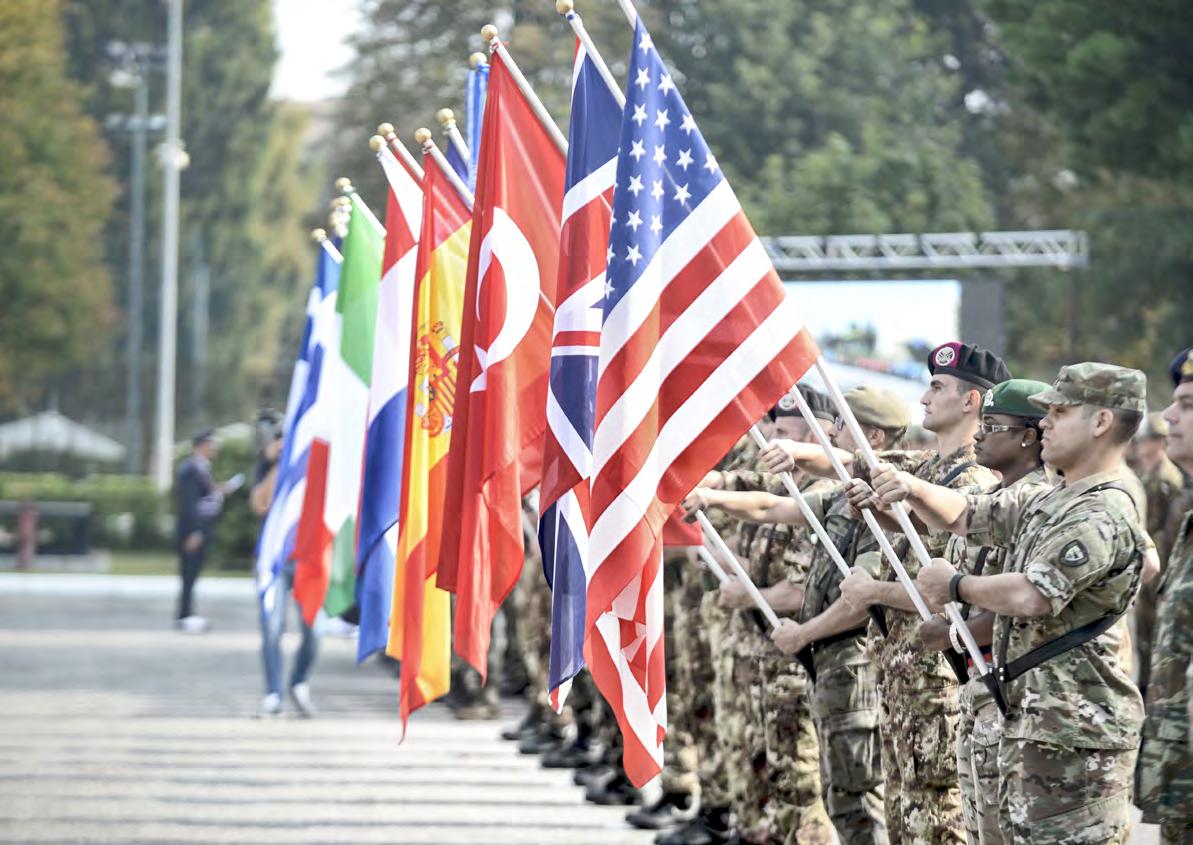
Supervision of the Main Training Events
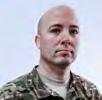
The military personnel exchange program (Military Personnel Exchange Program - MPEP) is intended to reinforce and facilitate alliances between the coalition partners. The United States and Italy have at least six different MPEP positions for their respective countries, which usually involve a one-for-one exchange of military personnel. These exchange programs serve to increase cooperation in defense efforts and support the national campaign plans of both countries by fostering their commitment to the shared objectives of NATO. The Army Simulation and Validation Center began its first MPEP exchange in August 2016. The Italian Army selected Major Luca Palombi, stationed in Grafenwoehr, Germany, to represent the Italian Army at the Joint Multinational Training Center, and in turn the United States Army designated Maj. Trevis Delker to Ce.Si.Va. as liaison officer. The arrangement’s objective is to have a liaison officer who can reinforce and integrate the live, virtual and constructive components and the game simulations into the Army’s training regimen in the most realistic way possible.
In addition, the liaison officers will improve the multinational operability – always a complex endeavor – by filling in the gaps in the shared operational scenario.
Since many NATO countries utilize numerous platforms, system integration is a constant challenge, and the liaison officers can make an important contribution. For the duration of the exchange program, the liaison officers will work on drawing up plans to support training activities for multinational armies and participate in the Joint Event Life Cycle (JELC) conferences. They may also assist in testing new and innovative simula-
tions before they are implemented by the Army. Thanks to the knowledge acquired during such an enriching experience, the liaison officers should be able to make future contributions to the tactical and operational planning of both Armies.
Following the completion of the exchange program, each officer should be able to put his abilities and knowledge to good use, thanks to the time spent in contact with the host country, having built up personal relationships as well as strengthening the relationship between the two nations.
The Ce.Si.Va. is a primary player in the context of large-scale multinational military exercises, under the aegis of NATO, ONU and the EU, as a guide for the Army and wherever the principles and modalities of training simulations are applied, even in highly complex and diversified scenarios.
This is where one can see the importance of the synergies created with the NATO Rapid Deployable CorpsItaly, based in Solbiate Olona, which has grown into a constant partner in the development of the Army’s operative capabilities.
Ce.Si.Va. personnel are thus called upon to provide the staff required to create the necessary organizational and functional conditions, so that the Army corps and
the units under its operational command can “enact” the mission envisioned by the scenario.
In practice, Ce.Si.Va. plays the key role of Exercise Control (EXCON), a genuine guarantor of the functioning of the structure designed to facilitate the achievement of the training objectives outlined each time.
Maj. USA (A) Trevis DELKER
21 20
The Library, the Roman cisterns, the Museum
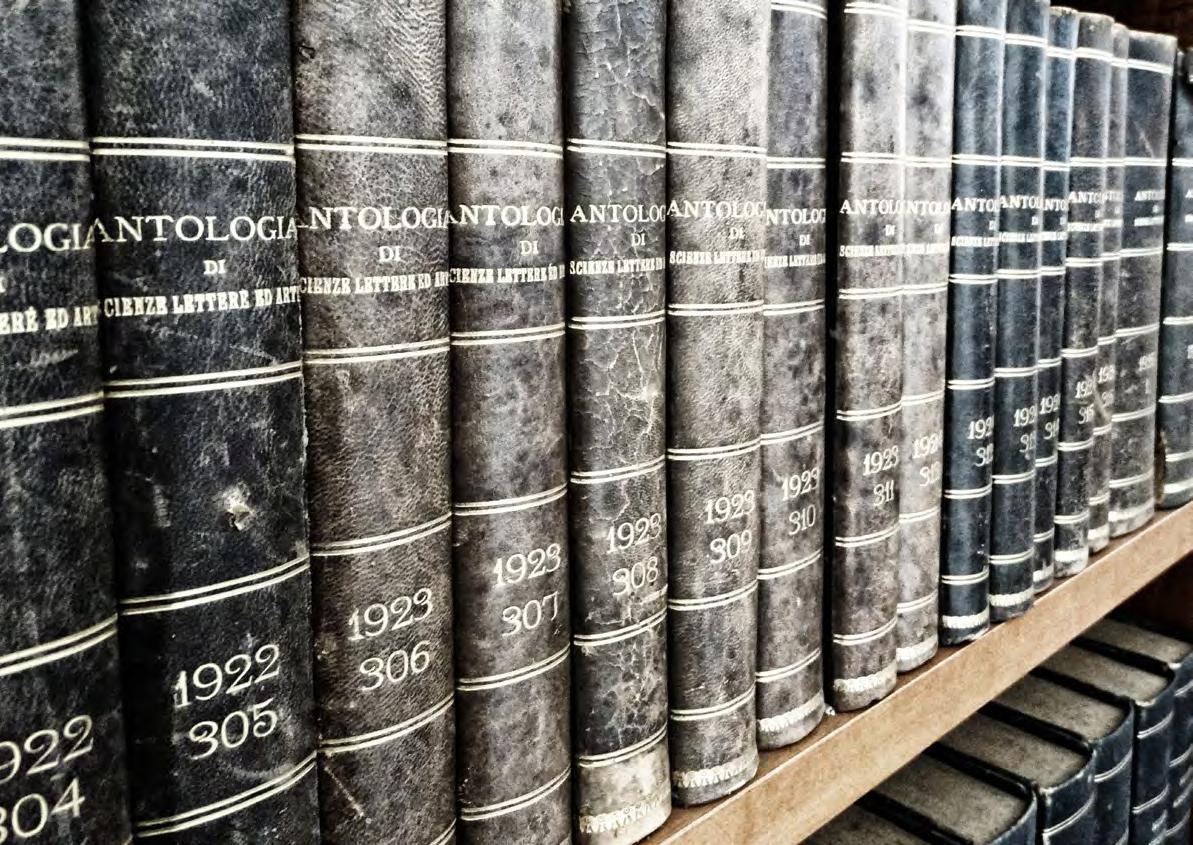
The Army Simulation and Validation Center boasts one of the most complete and valuable Italian military libraries, boasting over one hundred thousand ancient and modern volumes and hundreds of collections of Italian and foreign military periodicals. The ancient collection was a legacy of the Turin Istituto Superiore di Guerra, while the modern collection was begun in 1949. Its founding date is September 1, 1867, at the Turin Istituto Superiore di Guerra. Its collection already included 35,000 volumes, divided into several categories and above all of a military nature. Over the years, the collection grew, thanks to donations and purchases, and in 1947 it was moved to the Giorgi military base. Today, there are more than 100,000 titles, including books on history, literature, natural and applied sciences, geography, foreign languages, military matters and many other subjects. Among the volumes of particular value are 4 Incunabola from the 1400s, 53 volumes from the 1500s and 95 from the 1600s. In 2003 a complete restoration was begun, to which the Cassa di Risparmio di Civitavecchia contributed; this restoration ensured that the library would be in the best possible condition for its opening to the public. In fact, thanks to an agreement with the Municipality of Civitavecchia, this prodigious legacy is available to anyone who, for various reasons, feels the need to consult the library’s texts. For several years, pupils of elementary schools and students up to university age visit the library, as well as various groups and associations who wish to examine the collection’s books. The library serves as a valid learning tool for the Center’s military and civilian personnel, as well as for students, and is an important cultural asset for the entire city.
The museum opened its doors on December 11, 1962, in the presence of the then President of the Republic, Antonio Segni. It comprises a sacrarium and three other halls, subdivided into collections of arms and documents of a precious historical value for the institute. It is the repository of more than 140 years of history, from Turin to Civitavecchia. In the sacrarium, which lies at the exact geometric heart of the museum complex, there stands a pillar of unpolished stone from the Carsus, near Trieste, supporting a large bronze book, on which are inscribed the words “Alere Flammam” and from whose spine a bronze torch emerges. It is the book of military science and history, the tangible emblem of the former School of War and, at the same time, the Institute’s heraldic motto. The walls, surfaced in travertine, lend the space solemnity. On them, in bronze letters, are the names of the officers of the General Staff who paid the ultimate price in war. Two Italian flags, held by two bronze arms, one at each corner of the entry corridor to the sacrarium, complete the space’s solemn décor.
The cisterns were unearthed in 1987 by Ennio Brunori, an architect from Civitavecchia, using plans and documents dating back to the end of the seventeenth century. He discovered a room devoted to measuring the flow of water, which led, through two narrow and separate stairways in stone, down to two large and still intact cisterns, with monumental vaulted arches supported by thick pillars. Thanks to the funding contributed by Fondazione Ca.Ri. Civ. (Cassa di Risparmio di Civitavecchia) the Center was able to oversee some work that made it easier to access the cistern, making it possible to allow visitors to admire the structure, which is regularly open to the public.
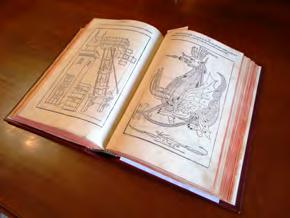
“DE RE MILITARI”
Author: Roberto VALTURIO
Printed by: Bonin de Boninis di Ragusa - Verona 1483
A precious printed edition of a treatise on The Art of War, by Roberto Valturio. The work is of particular interest due to the beauty of the illustrations (woodcuts), with examples and descriptions of military machines, techniques and industrially produced machinery and arms, focusing on gunpowder and artillery. It was one of the first books of any kind printed in Verona, and the first illustrated volume produced by the nascent European typographical industry, as well as the first book printed to deal with a technical topic.
Civitavecchia (Rome), “Giorgi” Base Vaulted arches of the Roman cisterns
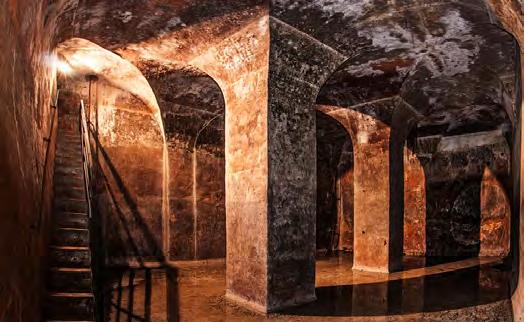
Ce.Si.Va.: A LOCATION OF HISTORICAL AND CULTURAL INTEREST
23 22
Photo credit: Ce.Si.Va.

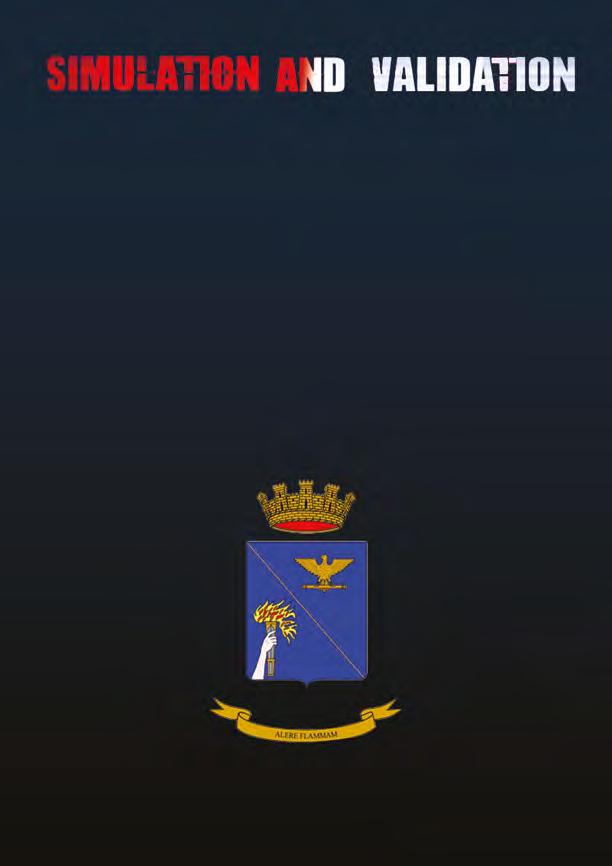

“Giorgi” Barracks CE.SI.VA, Via Leopoli, 36, 00053 Civitavecchia (RM) ItalyTel: +39 0766 5971





































